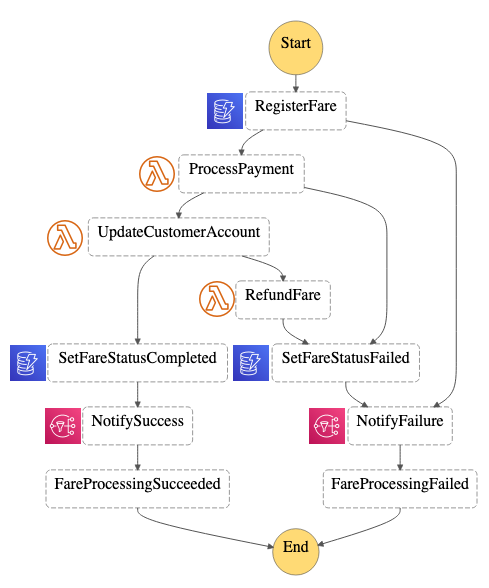AWS Compute Blog
Automating mutual TLS setup for Amazon API Gateway
Mutual TLS (mTLS) for API Gateway is now generally available at no additional cost. This post shows how to automate mutual TLS for Amazon API Gateway HTTP APIs using the AWS Certificate Manager Private Certificate Authority as a private CA. Using infrastructure as code (IaC) enables you to develop, deploy, and scale cloud applications, often with greater speed, less risk, and reduced cost.
Optimizing batch processing with custom checkpoints in AWS Lambda
The default behavior for stream processing in Lambda functions enables entire batches of messages to succeed or fail. You can also use batch bisecting functionality to retry batches iteratively if a single message fails. Now with custom checkpoints, you have more control over handling failed messages.
Using AWS Lambda for streaming analytics
With tumbling windows, you can calculate aggregate values in near-real time for Kinesis data streams and DynamoDB streams. Unlike existing stream-based invocations, state can be passed forward by Lambda invocations. This makes it easier to calculate sums, averages, and counts on values across multiple batches of data.
Using self-hosted Apache Kafka as an event source for AWS Lambda
Lambda now supports self-hosted Kafka as an event source so you can invoke Lambda functions from messages in Kafka topics to integrate into other downstream serverless workflows. This post shows how to configure a self-hosted Kafka cluster on EC2 and set up the network configuration. I also cover how to set up the event source mapping in Lambda and test a function to decode the messages sent from Kafka.
ICYMI: Serverless pre:Invent 2020
During the last few weeks, the AWS serverless team has been releasing a wave of new features in the build-up to AWS re:Invent 2020. This post recaps some of the most important releases for serverless developers. re:Invent is virtual and free to all attendees in 2020 – register here. See the complete list of serverless […]
Using Amazon SQS dead-letter queues to replay messages
This is courtesy of Alexandre Pinhel, Specialist SA Manager, in collaboration with Guillaume Marchand and Luke Hargreaves, Solutions Architects. Amazon Simple Queue Service (Amazon SQS) is a fully managed message queuing service. It enables you to decouple and scale microservices, distributed systems, and serverless applications. A commonly used feature of Amazon SQS is dead-letter queues. The […]
Creating faster AWS Lambda functions with AVX2
With the release of AVX2 for Lambda, customers can now run AVX2-optimized workloads while benefitting from the pay-for-use, reduced operational model of AWS Lambda. This feature is provided at no additional cost.
Simplifying cross-account access with Amazon EventBridge resource policies
This post shows you how to use the new features Amazon EventBridge resource policies that make it easier to build applications that work across accounts. Resource policies provide you with a powerful mechanism for modeling your event buses across multiple accounts, and give you fine-grained control over EventBridge API invocations.
Application integration patterns for microservices: Orchestration and coordination
Using Wild Rydes, I show how to use Amazon SQS and AWS Step Functions to decouple your application components and services. I show you how these services help to coordinate and orchestrate distributed components to build resilient and fault tolerant microservices architectures.
Getting started with RPA using AWS Step Functions and Amazon Textract
This post is courtesy of Joe Tringali, Solutions Architect. Many organizations are using robotic process automation (RPA) to automate workflow, back-office processes that are labor-intensive. RPA, as software bots, can often handle many of these activities. Often RPA workflows contain repetitive manual tasks that must be done by humans, such as viewing invoices to find […]










